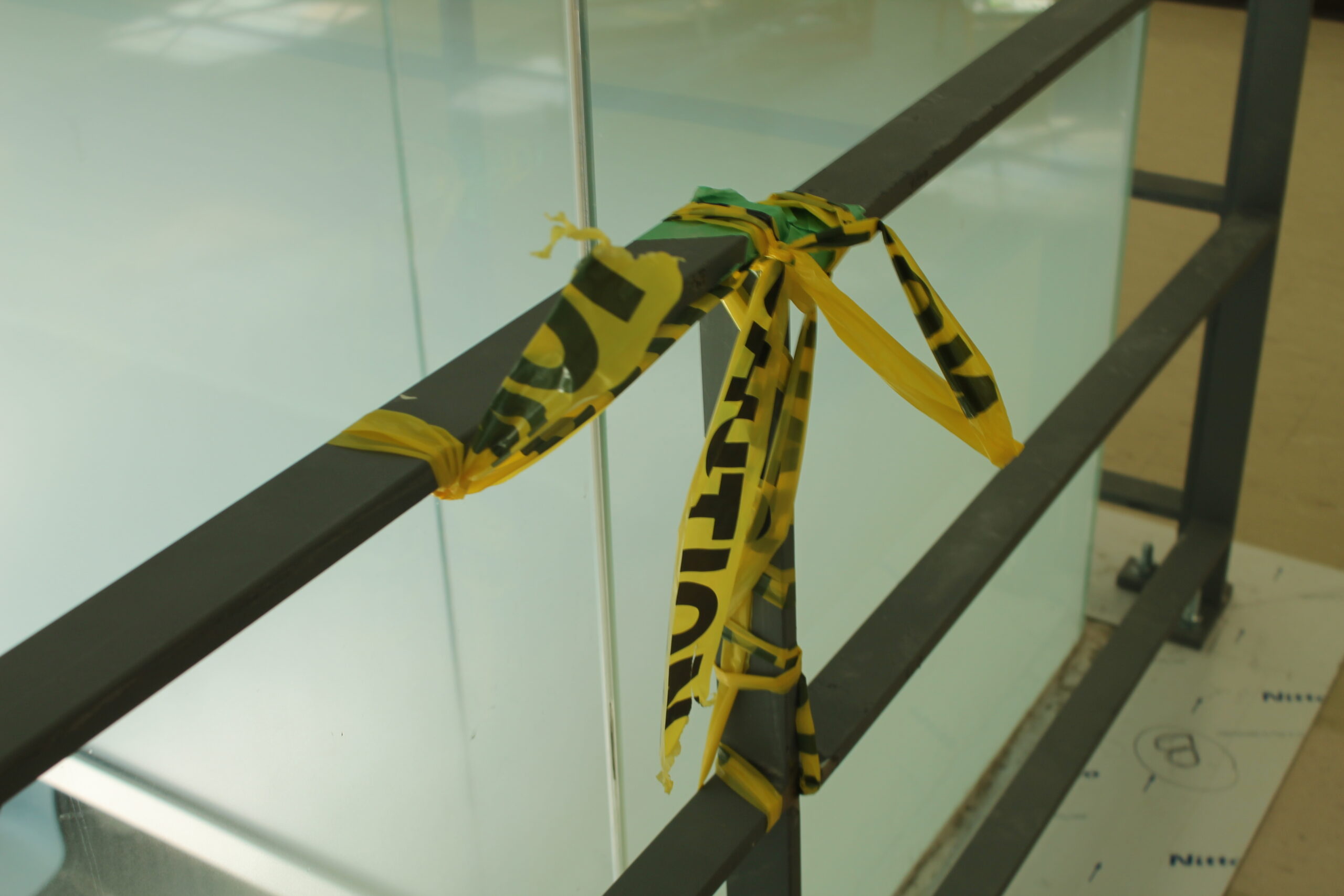UTM construction project exposed as a front for psychological study
A source from the Department of Psychology reveals that a seven-year-long construction project at UTM is part of an ongoing study on distress tolerance, in which research students and faculty themselves are the guinea pigs.
A graduate student in the University of Toronto Mississauga’s (UTM) Department of Psychology, who spoke on the condition of anonymity, revealed to The Medium that the ongoing construction in the research wing of the William G. Davis Building serves as the cover for a longitudinal behavioural study headed by Craig Chambers, the chair of the Department of Psychology.
“The intent of the study is to examine what impacts distress tolerance,” stated the graduate student, one of the many researchers involved with the project. “We decided that rather than spending the resources to collect a sample group, we could exploit the research students and faculty who were already disposed to us. It would save us time and money.”
The Department of Psychology applied for the study’s funding from U of T in 2015. Once their application was approved, they designed a phony construction company and began brainstorming ways they could inconvenience the faculty and research students working in the William G. Davis Building.
“The study began in September 2016, with the expectation that once enough complaints were filed and processed by the administrative office, we would conclude the study and publish our findings,” said the graduate student. “But complaints have been filed and still the department won’t end the study.”
Despite having worked on the project for several years, the graduate student who spoke to The Medium now feels that the Department of Psychology has taken their experiment too far, asking, “Sure, the data is fantastic—but at what cost?”
“The first change we made was to remove all the panelling from the ceiling,” explained the graduate student. “Several professors disguised themselves as construction workers and spent a week stripping out the ceiling tiles. They left exposed wiring and debris all over the labs. We wanted to see how the research students would react to changes in their environment.”
In 2016, the researchers informed the faculty that the construction would only last a month. They wanted to examine how such expectations could impact the distress tolerance of students and staff. However, in March 2017, the research team decided to expand the study. They issued a statement that the construction project would require cutting power to the research wing.
Several freezers, which housed samples and expensive reagents, were supposed to be powered by a generator for the duration of the outage. However, the researchers had never planned on using the generator—and the freezers thawed. “Some projects, which had been in process for months were ruined,” recalled the graduate student.
Over seven years, the researchers have continuously toyed with the distress levels of graduate students. They repaired vents, which released dust particles into the air and contaminated samples. They forced students to evacuate their labs, explaining that urgent repairs of electrical units were underway. They even disrupted the vivarium where live animals were kept for study.
“It’s now been seven years, and we only expected it to last a few weeks,” remarked the graduate student. Professors Craig Chambers, Judith Anderson, and Dax Urbszat have all posed as construction workers throughout the study, but despite their cheap costumes, they have never been recognized.
While construction on the main floor was recently concluded, many of the labs are still being toyed with for “observational purposes.” It is still unclear whether any of the data will be statistically significant. Regardless, if you are a research student impacted by the ongoing construction, please consider filing a formal complaint with the U of T administration.
Copy Editor (Volume 49) | aidan@themedium.ca —Aidan is completing a major in Professional Writing and Communications at the University of Toronto Mississauga. He previously worked as the Associate Editor for the Arts and Entertainment section of The Medium, and currently works as the Copy Editor for The Medium. When he’s not catching up on course work or thumbing through style guides, Aidan spends his free time exercising (begrudgingly), singing (unmelodically), and trying (helplessly) to read David Foster Wallace’s Infinite Jest. The latter of which has taken 3 years to reach the 16th page. You can connect with Aidan at aidan@themedium.ca.



This study is absolutely ridiculous, and creates the notion that we’ve got one silly experiment disrupting all other experiments that come out of the university. Absolute nonsense.